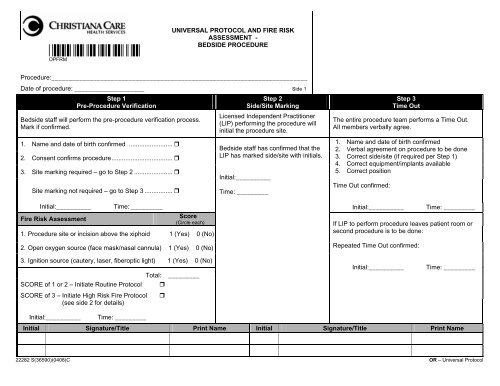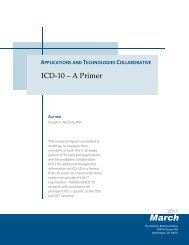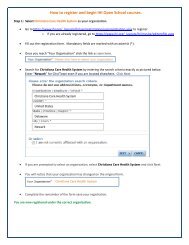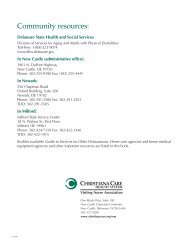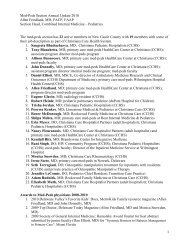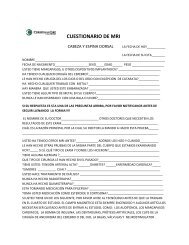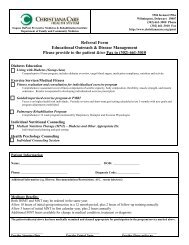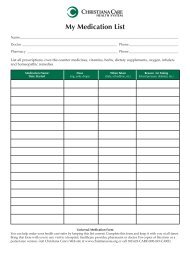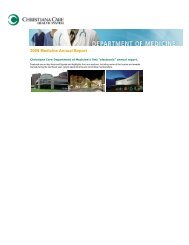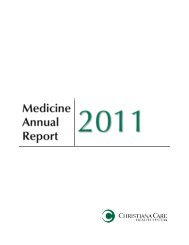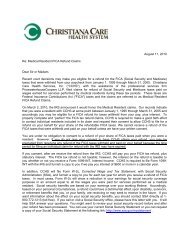Universal Protocol and Fire Risk Assessment - Bedside Procedure
Universal Protocol and Fire Risk Assessment - Bedside Procedure
Universal Protocol and Fire Risk Assessment - Bedside Procedure
You also want an ePaper? Increase the reach of your titles
YUMPU automatically turns print PDFs into web optimized ePapers that Google loves.
*OPFRM*OPFRMUNIVERSAL PROTOCOL AND FIRE RISKASSESSMENT -BEDSIDE PROCEDURE<strong>Procedure</strong>:_________________________________________________________________________Date of procedure: ____________________ Side 1Step 1Pre-<strong>Procedure</strong> Verification<strong>Bedside</strong> staff will perform the pre-procedure verification process.Mark if confirmed.1. Name <strong>and</strong> date of birth confirmed ......................... 2. Consent confirms procedure................................... 3. Site marking required – go to Step 2 ...................... Site marking not required – go to Step 3 ................ Initial:__________<strong>Fire</strong> <strong>Risk</strong> <strong>Assessment</strong>Time: _________Score(Circle each)1. <strong>Procedure</strong> site or incision above the xiphoid 1 (Yes) 0 (No)2. Open oxygen source (face mask/nasal cannula) 1 (Yes) 0 (No)Step 2Side/Site MarkingLicensed Independent Practitioner(LIP) performing the procedure willinitial the procedure site.<strong>Bedside</strong> staff has confirmed that theLIP has marked side/site with initials.Initial:__________Time: _________Step 3Time OutThe entire procedure team performs a Time Out.All members verbally agree.1. Name <strong>and</strong> date of birth confirmed2. Verbal agreement on procedure to be done3. Correct side/site (if required per Step 1)4. Correct equipment/implants available5. Correct positionTime Out confirmed:Initial:__________Time: _________If LIP to perform procedure leaves patient room orsecond procedure is to be done:Repeated Time Out confirmed:3. Ignition source (cautery, laser, fiberoptic light) 1 (Yes) 0 (No)Total: _________SCORE of 1 or 2 – Initiate Routine <strong>Protocol</strong> SCORE of 3 – Initiate High <strong>Risk</strong> <strong>Fire</strong> <strong>Protocol</strong> (see side 2 for details)Initial:__________Time: _________Initial:__________Time: _________Initial Signature/Title Print Name Initial Signature/Title Print Name22282 S(36590)(0408)C OR – <strong>Universal</strong> <strong>Protocol</strong>
UNIVERSAL PROTOCOL AND FIRE RISK ASSESSMENT - BEDSIDE PROCEDURE Side 2PURPOSE: To be used when an RN or Technician (Tech) assists or observes a Licensed Independent Practitioner (LIP) performing a bedside procedure. In theevent that the LIP performs a procedure without assistance or observation by an RN or tech, the LIP will document their Time Out in the proceduredocumentation <strong>and</strong> this form may be omitted.• Step 1 – Pre-procedure Verification ProcessPurpose: To outline the process for identifying the correct person, correct procedure, <strong>and</strong> correct site for surgical <strong>and</strong> invasive procedures withinvolvement of the patient or decision maker when possible.A. The caregiver (RN/LPN, anesthesia provider, surgeon, resident, PA) beginning the verification process will initiate this form.B. Mark (√ ) the boxes confirming your verification process.C. Resolve discrepancies identified through the verification process prior to initiating the bedside procedure.• Step 2 – Side /Site MarkingPurpose: To clearly identify the intended site of incision or insertion.A. Licensed Independent Practitioner (LIP) performing the procedure will initial patients having surgical/invasive procedures involving laterality, digits orlevel(s). The RN will confirm presence of LIP initials.• Step 3 – Time OutPurpose: To conduct a final verification of the correct patient, procedure, site <strong>and</strong> implants (if applicable).A. Time out is completed prior to the start of each procedureB. Designated person (assisting RN or tech) will confirm agreement, <strong>and</strong> record Time Out.C. In the event that the LIP performing the procedure leaves the patient, repositions patient or performs second procedure after the Time Out had occurred,the Time Out process is repeated <strong>and</strong> documented.<strong>Fire</strong> <strong>Risk</strong> <strong>Assessment</strong>• Routine <strong>Protocol</strong>1. Fuela) When an alcohol based solution is used, use minimal amount of solution <strong>and</strong> allow sufficient time for fumes to dissipate before draping. Observedrying time (minimum 3 minutes). Do not drape patient until flammable prep is fully dry.b) Do not allow pooling of any prep solution (including under the patient).c) Remove bowls of volatile solution from sterile field as soon as possible after use.d) Utilize st<strong>and</strong>ard draping procedure2. Ignition Sourcea) Check all electrical equipment before use.b) Protect all heat sources when not in use. (cautery pencil holster, laser in st<strong>and</strong> by mode etc.)c) Activate heat source only when active tip is in line of sight.d) De-activate heat sources before tip leaves surgical site.• High <strong>Risk</strong> <strong>Protocol</strong> (includes all of routine protocol1. Use appropriate draping techniques to minimize O 2 concentration (i.e. tenting, incise drape).2. Electrical Surgical Unit (ESU) setting should be minimized.3. Encourage use of wet sponges.4. Basin of sterile saline <strong>and</strong> bulb syringe available for suppression purposes only.5. Anesthesia Care Provider considerations:• A syringe full of saline will be available, in reach of the anesthesia care provider, for procedures within the oral cavity.• Documentation of oxygen concentration/flows. Use of “MAC Circuit” for oxygen administration.


